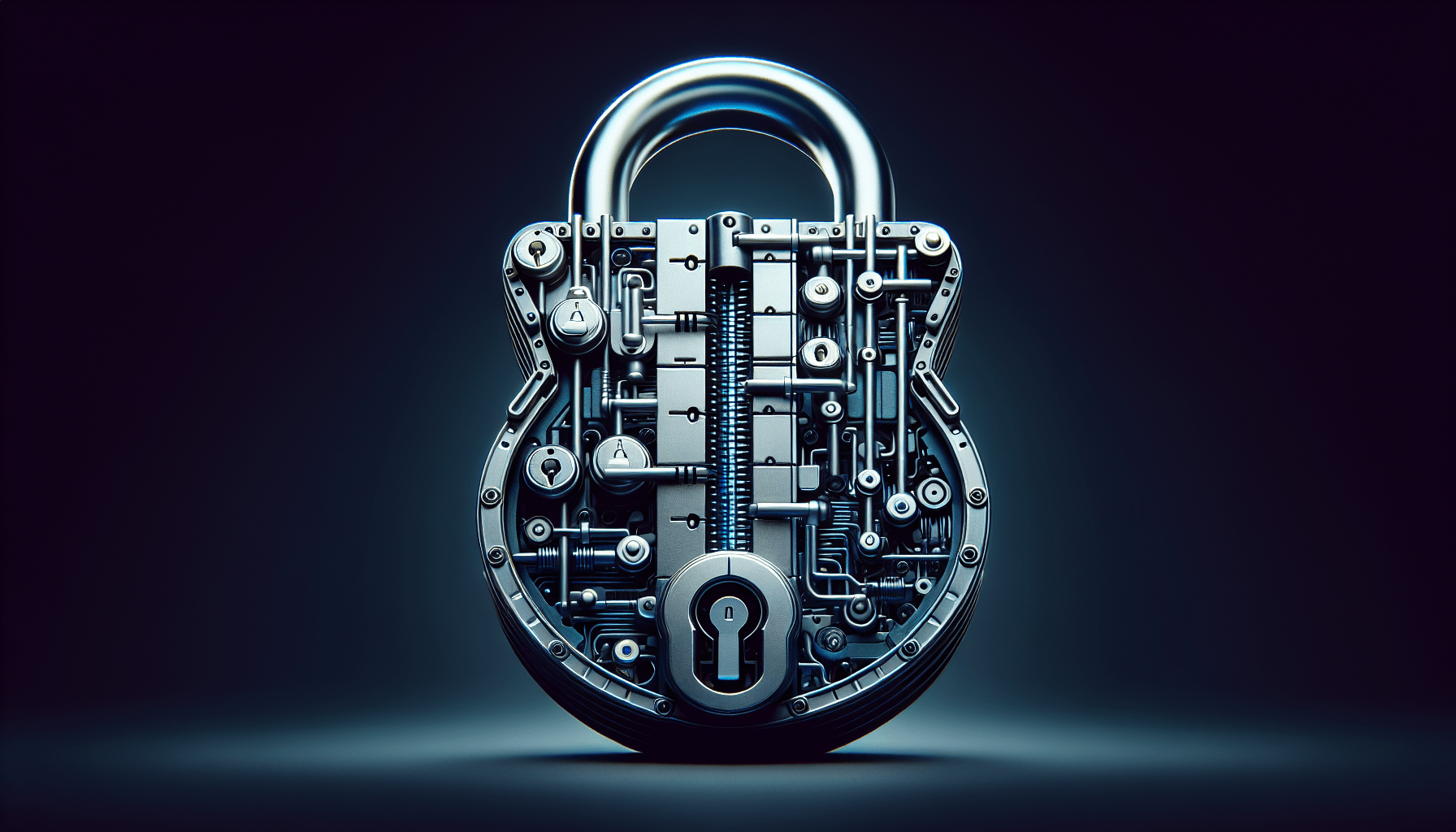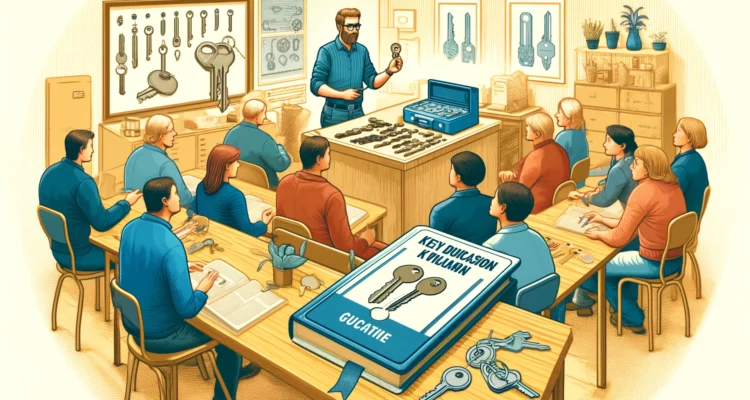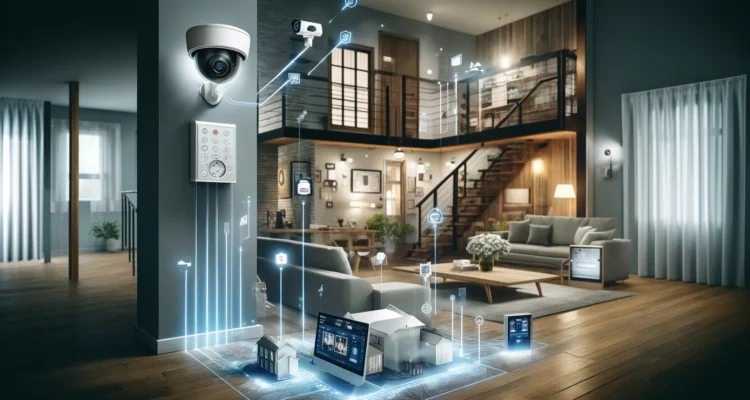Preventative Lock Maintenance: Avoiding Lockouts And Break-Ins
Imagine securing your home in such a way that it not only keeps potential intruders at bay but also envelops your loved ones in a cocoon of safety, where every lock and alarm is a testament to your sanctuary’s resilience. “Preventative Lock Maintenance: Avoiding Lockouts and Break-Ins” offers a deep dive into how this peace of mind can be achieved. Through expert home security inspections that scrutinize every aspect of your abode, from the physical strength of doors and windows to the intricacies of your daily routines, this guide underscores the essence of creating a secure haven. With a blend of innovative solutions and a proactive approach, it empowers you with knowledge on preventing unwelcome incidents, ensuring that your safe haven remains inviolable against threats.

Understanding Lock Mechanics
Types of locks and their mechanisms
Locks come in various shapes, sizes, and mechanisms, each with unique features tailored for specific security needs. You might be familiar with traditional deadbolts and knob locks, commonly used in residential settings. There are also mortise locks, often found in commercial spaces, offering a higher level of security due to their complex mechanism that fits into a pocket cut into the door. Smart locks represent the latest in lock technology, allowing keyless entry through a numerical code, biometric scan, or smartphone control. Understanding these types can help you choose the right lock for your home.
Common vulnerabilities in residential locks
Many residential locks share common vulnerabilities that burglars can exploit. For example, some locks are susceptible to “bumping,” a technique using a specially crafted key to quickly unlock a door without the need for the original key. Similarly, cheaply made locks might be easily picked or forced open. Recognizing these vulnerabilities is crucial in selecting locks that provide a higher level of security.
How weather and wear affect lock function
Over time, locks can be affected by weather conditions and wear. Extreme temperatures, moisture, and dust can lead to corrosion, freezing, or accumulation of grime, all of which can impair lock function. Such deterioration not only makes it difficult to use the lock but also weakens its security, making it easier to breach.
Routine Check-Ups
Scheduling regular professional inspections
Just like any other aspect of home maintenance, locks require regular professional inspections. These inspections can uncover hidden issues that might not be immediately obvious to you. Scheduling an expert home security inspection annually ensures that your locks, along with other security measures, are in optimal condition, safeguarding your peace of mind.
DIY lock inspection guide
Between professional check-ups, conducting your DIY lock inspections is a good practice. Start by checking if the lock mechanism operates smoothly without sticking or resistance. Inspect the door frame to ensure the lock aligns properly without requiring force to lock or unlock. Also, look for any visible signs of wear, rust, or tampering that could compromise the lock’s integrity.
Identifying signs of lock fatigue and failure
Recognizing the early signs of lock fatigue or failure can prevent unexpected lockouts or breaches. Difficulty turning the key, visible damage, or a lock that operates intermittently are clear indicators that the lock may need repair or replacement. Addressing these signs early can save you from bigger security risks down the line.
Lubrication and Cleaning
Recommended lubricants for different lock types
Lubricating your locks regularly can extend their life and maintain smooth operation. However, it’s crucial to use the right type of lubricant for your specific lock to avoid causing damage. For most residential locks, a dry lubricant like graphite powder is recommended because it doesn’t attract dirt. In contrast, wet lubricants can gum up and collect debris, leading to more issues.
Step-by-step guide on lock lubrication
To properly lubricate a lock, start by inserting the nozzle of the lubricant into the keyway and apply a small amount. Next, insert your key and turn it several times to distribute the lubricant evenly. Wipe away any excess lubricant to avoid attracting dust. This simple maintenance routine can remarkably improve your lock’s performance and longevity.
Keeping locks clean from dust and debris
In addition to regular lubrication, keeping your locks clean is vital for their function and durability. Use a canned air duster to blow out any dust, cobwebs, or foreign materials from the keyhole. For the external parts of the lock, a damp cloth can remove dirt and grime, just be sure to dry the surface afterward to prevent rusting.
Upgrading Lock Systems
When to consider upgrading your locks
If your locks are old, showing signs of damage, or have been compromised in any way, it might be time to consider upgrading. Advances in lock technology offer far greater security than older models. Upgrading is also wise if you’ve recently moved into a new home, as previous occupants may still have copies of the keys.
Modern lock technologies and their advantages
Modern lock technologies such as smart locks offer significant advantages, including keyless entry, remote access, and the ability to monitor entry and exit through a smartphone app. These features not only enhance security but also offer unparalleled convenience, allowing you to control access to your home from anywhere.
Integrating smart locks into home security systems
Smart locks can be integrated into broader home security systems for a more comprehensive approach to safety. This integration can enable features like automated locking and unlocking based on your proximity to your home or alerts when your door is left unlocked, ensuring your home remains secure at all times.
Key Management
Creating and managing key duplicates
Maintaining control over who has access to your home is crucial for security. When creating key duplicates, use a reputable locksmith to ensure accuracy and quality. Keep an inventory of all issued keys and whom they’ve been given to, and ensure any unreturned keys are accounted for by changing locks or rekeying as necessary.
Safe storage solutions for spare keys
Storing spare keys securely is essential to prevent unintended access. Instead of hiding keys around your property, consider a lockbox or, for higher security, storing them with a trusted neighbor or family member. This way, you have access to a spare key when needed without putting your home at risk.
The risks of hidden keys and alternative solutions
Hiding keys around your property is a common but risky practice; burglars are well aware of common hiding spots. Alternatively, smart locks eliminate the need for physical keys and, therefore, the need to hide them. If a physical key is necessary, a combination lockbox is a safer option, providing access only to those who know the code.
Burglary Prevention
Strengthening doors and frames for enhanced security
A lock is only as strong as the door and frame it’s attached to. Strengthening your doors and frames can significantly enhance your home’s security. Consider installing deadbolt strikes with longer screws that reach the studs behind the frame, and use metal or solid wood doors that are more resistant to forced entry.
Effective lighting and visibility strategies
Burglars are less likely to target well-lit homes. Effective lighting around your home’s exterior can deter potential burglars by eliminating hiding spots. Motion sensor lights are particularly useful, as they activate when someone approaches, drawing attention to movement around your property.
The importance of consistent lock use patterns
Developing consistent habits around locking your doors and windows, even when you’re home, is crucial for maintaining security. Many burglaries occur because of opportunistic thieves taking advantage of unlocked doors. A consistent lock use pattern can significantly reduce the risk of unauthorized entry.
Emergency Preparedness
Creating a lockout response plan
Having a plan in place for lockouts can save you stress and time. This plan might include having a spare key with a trusted neighbor or knowing the contact information for a reliable local locksmith. Preparing for this scenario ensures you can regain access to your home quickly and safely should you find yourself locked out.
List of essential contacts, including locksmiths
Keep a list of essential contacts, including reputable local locksmiths, as part of your emergency preparedness. This list should be easily accessible, perhaps stored in your phone or online, so you can quickly call for help when needed. Choose locksmiths with good reviews and credentials to ensure quality service.
Temporary security measures during lock failure
In the event of a lock failure, having temporary security measures in place can keep your home protected while awaiting repair or replacement. This might include using secondary locks, such as slide bolts or chain locks, or placing a dowel in the track of sliding doors or windows to prevent them from being opened from the outside.
Professional Help and Consultation
When to call a professional locksmith
There are several scenarios where calling a professional locksmith is advised, such as when you’re locked out, need to rekey or replace locks, or when your locks fail to function properly. Professional locksmiths can also provide invaluable advice on upgrading your lock systems for enhanced security.
Benefits of a professional security audit
A professional security audit goes beyond just assessing your locks; it evaluates your entire home’s security setup. This comprehensive inspection can reveal vulnerabilities you may not have considered, offering peace of mind knowing that your home is as secure as possible. It’s a crucial step in proactive home protection.
Customized security enhancements based on professional assessments
Following a professional security audit, you’ll receive customized recommendations for security enhancements. These might include upgrading locks, reinforcing doors and windows, or integrating smart home security technologies. These tailored solutions are designed to meet your specific needs, ensuring your home is fortified against potential threats.
Educating Household Members
Training on proper lock usage and maintenance
Training your household members on proper lock usage and maintenance is essential for ensuring everyone plays a role in home security. This includes educating them on the importance of locking doors and windows, how to use new technology like smart locks, and routine maintenance checks.
Importance of security awareness for all ages
Fostering a sense of security awareness among all family members, regardless of age, contributes to a safer home environment. Discussing topics like not opening the door to strangers and the importance of privacy and security can help instill responsible habits and awareness from a young age.
Role of each family member in home security
Every family member has a role in maintaining home security. Assigning responsibilities, whether it’s ensuring doors are locked before bedtime or managing the control of smart home security systems, can involve everyone in keeping the home safe and secure. It’s a team effort that reinforces the value of proactive security measures.
Leveraging Technology for Security
Incorporating surveillance with locking systems
Incorporating surveillance technology, such as cameras, with locking systems provides an extra layer of security. This combination allows you to monitor your home in real-time, receive alerts for unusual activity, and even control locks remotely, offering both security and convenience.
Remote access and monitoring features
Remote access and monitoring are standout features of modern home security systems. They allow you to control and observe your home’s security from anywhere, using a smartphone or computer. Whether it’s checking if the door is locked or viewing camera feed, these features empower you to maintain security remotely.
The future of home security: Trends and predictions
The future of home security looks promising, with advances in technology leading to even smarter, more integrated systems. Predictions include the use of artificial intelligence to predict and notify homeowners of potential security breaches before they happen, and the integration of home security with other smart home technologies for a unified, automated home environment. Staying informed about these trends can help you make educated decisions on how to best protect your home and loved ones.



